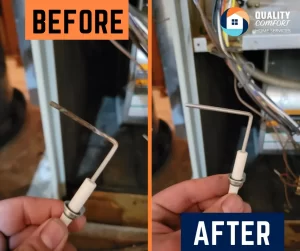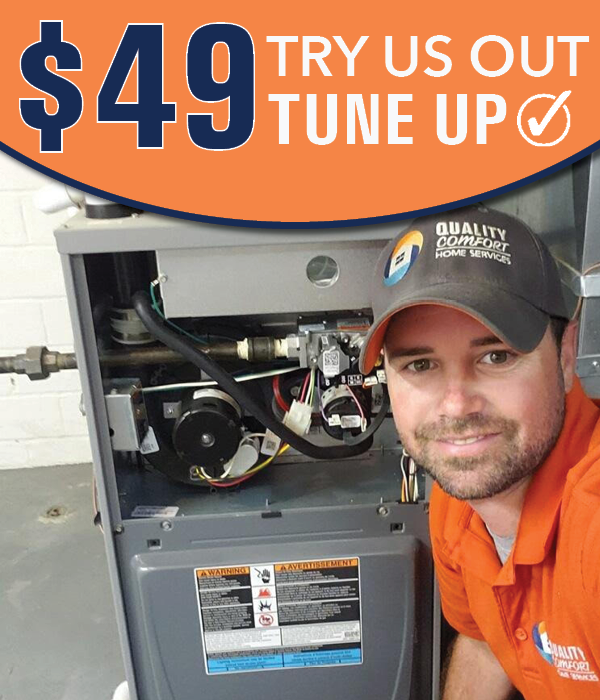Why Your Furnace Isn’t Blowing Hot Air And What to Do About It
When winter settles in, there’s nothing more frustrating than realizing your furnace is running but not producing warm air. Luckily, many causes are relatively simple, some you can fix yourself, others require a technician. In this guide, we’ll walk through the most common reasons a furnace might blow cold air, how to troubleshoot safely, and when to call in pros.
Quick Checks to Do First
Before diving into complex repairs, start with basic diagnostics. These often solve the problem and save time and money.
-
Thermostat Settings
Make sure the thermostat is set to “Heat” rather than “Cool,” “Off,” or anything else. Also, check that the set temperature is higher than the room’s current temperature. Some thermostats also have a fan mode (“On,” “Auto,” etc.), which can cause air to blow even if heat isn’t being produced—this can lead to cool air coming out. Setting the fan to “Auto” helps ensure the fan only runs when heat is being supplied. -
Power & Breakers
Check your electrical panel: a tripped breaker or blown fuse can prevent the furnace from turning on. Also check any switches near the furnace; sometimes they get turned off accidentally. -
Air Filter Condition
A clogged or dirty air filter restricts airflow, making it hard for your furnace to distribute heat. It may cause the system to overheat and shut down as a safety response or simply reduce performance. Replace or clean the filter according to manufacturer directions (usually every 1–3 months depending on usage and filter type).
READ MORE: How often to change furnace filter
Common Mechanical or Component Problems
If the basics are all good, then the problem may lie inside the furnace or in how your system components are working.
-
Dirty Flame Sensor (Gas Furnaces)
In gas furnaces, the flame sensor is a safety device that detects the presence of flame. If it’s dirty or coated with residue, it may not detect the flame properly. When that happens, the control board might shut down the heating cycle to avoid hazards. Cleaning the flame sensor can often resolve this issue but be sure to turn off power and gas before attempting it. If you aren’t comfortable with DIY repairs then this would be the time to call in a pro.

-
Faulty or Out Pilot Light (Older Gas Models)
Older gas furnaces may have a constantly burning pilot light. If this goes out, the furnace won’t ignite. Relighting the pilot light may solve the issue, but if it keeps going out, the cause could be a bad thermocouple, gas supply issues, or drafts near the pilot assembly. -
Ignition System Failure (Modern Gas/Electric Furnaces)
Newer furnaces don’t always use pilot lights; they often use electronic ignition or hot surface ignition. If this system fails, the burners won’t light, so there will be no heat. Problems could include faulty ignition control boards, sensors, or circuitry. -
Blower Motor Problems
Even if your furnace is heating fuel or electric elements properly, a damaged or failing blower motor (or issues in its fan, belts, or bearings) will prevent warm air from being moved through your ductwork. Signs may include unusual noises, reduced airflow, or uneven heating. -
Ductwork or Vent Blockages
Warm air has to travel through ducts and vents to reach your rooms. If vents are closed or blocked by furniture, rugs, or other objects—or if ducts are crushed, disconnected, or leaking—you’ll get little to no warm air. Ensure all supply vents are open, inspect visible ducts, and ensure no major obstructions.
Sizing and Capacity Issues
Sometimes, even if everything is functioning properly, the furnace still can’t keep up. That often points to mismatch issues.
-
Furnace is Too Small for the Space
If the furnace’s heating capacity is undersized for the size or insulation quality of your home, it may run constantly and still never bring the temperature to your set point. In such cases, new construction, additions, or improvements to insulation can tax an older furnace beyond what it can handle. Upgrading to a higher-capacity unit may be necessary. -
Poor Insulation or Air Leaks
Cold drafts, leaky windows, under-insulated attics, or gaps around doors let warm air out and cold air in. Even with a perfectly working furnace, you might never feel warm if heat is escaping faster than it can be produced. Sealing leaks and improving insulation can make a dramatic difference.
Preventive Tips to Avoid Cold Surprises
- Change or clean filters regularly – the single most cost-effective step you can take.
- Keep vents and returns unblocked – don’t cover them with furniture or curtains.
- Seal duct leaks and insulate ducts in unconditioned areas.
- Check thermostat location – avoid placing it where drafts or sunlight might fool it.
- Annual tune-ups – have a professional service your furnace before cold weather hits.
- Install carbon monoxide detectors – especially with gas furnaces, ensure safety.
Furnace Maintenance
Home furnace maintenance is essential for ensuring the efficiency, safety, and longevity of your heating system. Regular maintenance helps your furnace operate at peak efficiency, which reduces energy consumption and lowers utility bills. It also extends the lifespan of your furnace by addressing minor issues before they become major problems, saving you from costly repairs or premature replacements. Importantly, routine inspections can identify potential safety hazards such as carbon monoxide leaks, ensuring the safety of your household.
Furnace repair Cincinnati
If your furnace isn’t blowing hot air, it’s essential to address the issue promptly to restore warmth to your home. Start with the simple fixes, such as checking the thermostat settings and replacing the air filter. If the problem persists, it may be time to call in professional furnace repair to diagnose and fix your furnace. If you’re near the Cincinnati area give Quality Comfort a call at 513-620-4822 or book service online 24/7.


